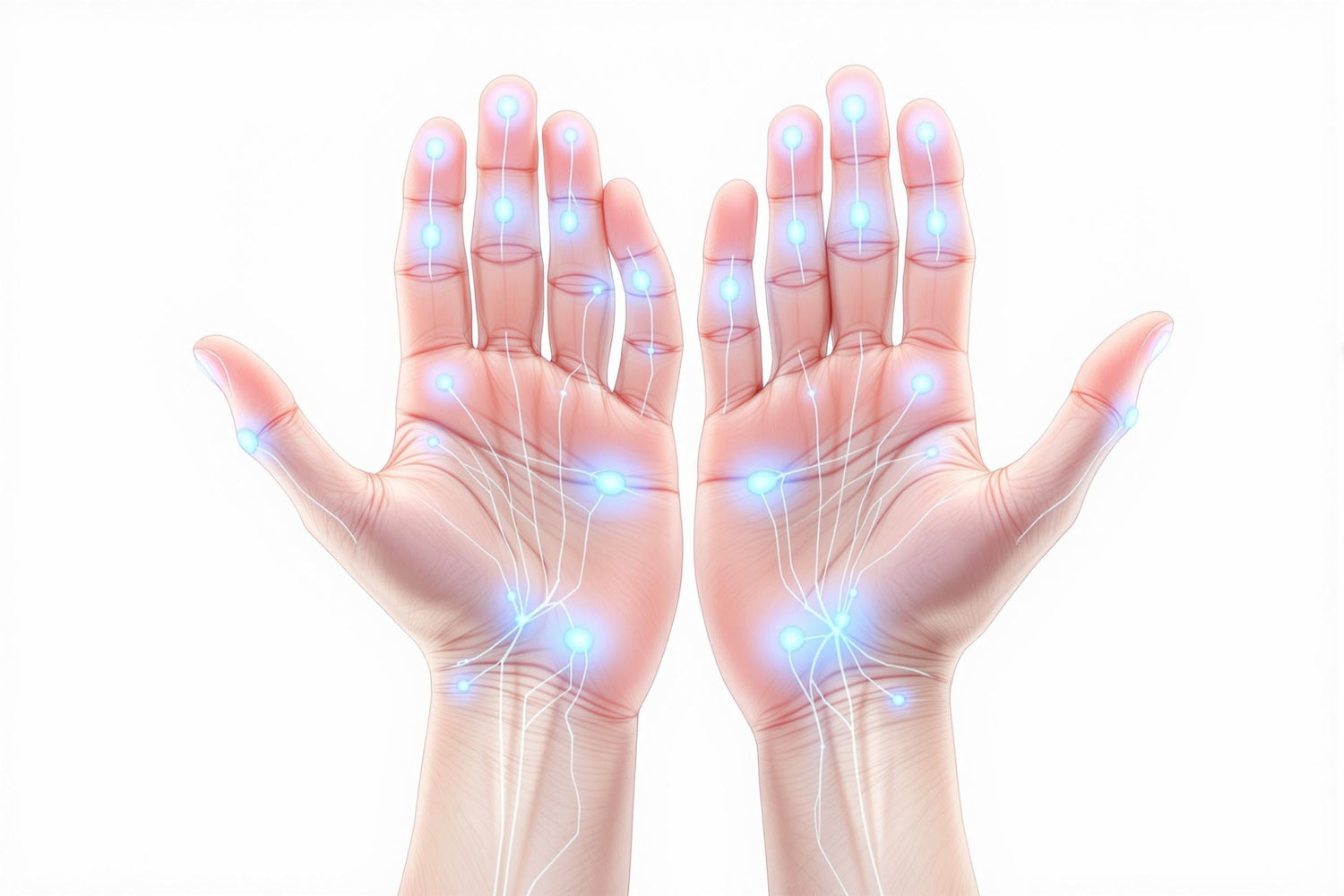Living with chronic pain is a reality for over 50 million Americans, according to the CDC, with women experiencing higher rates than men. While traditional medical treatments remain crucial, an increasing body of research supports the effectiveness of natural pain management techniques, particularly acupressure. This ancient practice, now backed by modern science, offers promising results for those seeking complementary pain relief methods.
The Science Behind Acupressure's Pain-Relief Properties
Recent studies published in the Journal of Pain Research have uncovered the remarkable mechanisms through which acupressure can reduce chronic pain intensity by up to 35%. At its core, acupressure works by engaging your body's natural pain-fighting systems. When specific pressure points are stimulated, your body responds by releasing endorphins – natural painkillers that can rival the effects of some medications. Research from the National Institutes of Health demonstrates that this isn't just a temporary fix; regular acupressure practice actually helps modify how your body processes pain signals.
Beyond endorphin release, acupressure significantly impacts your body's circulatory system. A groundbreaking 2023 study in Pain Medicine revealed that regular acupressure sessions increase local blood flow by up to 40%. This enhanced circulation doesn't just temporarily mask pain – it actively promotes healing by delivering oxygen and nutrients to damaged tissues while removing inflammatory compounds that contribute to chronic pain.

Understanding Key Pressure Points for Pain Relief
While numerous pressure points exist, scientific research has identified several particularly effective points for pain management. The Large Intestine 4 point (LI4), located in the webbing between your thumb and index finger, has shown remarkable results in clinical studies. Research indicates a 45% reduction in pain intensity within just 20 minutes of stimulation – particularly effective for headaches and facial pain.
For those struggling with lower back pain, the Liver 3 point (LV3) offers significant relief. Located on the top of the foot between the first and second toes, this point has demonstrated a 38% decrease in pain intensity when properly stimulated. Meanwhile, the Pericardium 6 point (P6) on the inner forearm has proven especially effective for managing nerve pain and reducing inflammation.
Bridging Ancient Wisdom with Modern Innovation
While traditional acupressure techniques require manual application, modern innovations have revolutionized how we can access these benefits. Contemporary solutions, such as therapeutic rings and other wearable devices, provide consistent pressure application throughout the day. This continuous stimulation has shown remarkable results, with research in the International Journal of Complementary Medicine reporting extended pain relief duration by up to 65%.
A 2023 systematic review published in the Journal of Alternative and Complementary Medicine analyzed 15 studies on continuous pressure therapy, revealing impressive outcomes. Participants experienced not only a 42% reduction in chronic pain intensity but also reported significant improvements in their daily function and reduced reliance on pain medication.

Implementing Acupressure in Your Daily Life
Creating an effective acupressure routine doesn't have to be complicated. Start your day with gentle pressure point stimulation, combined with deep breathing exercises. Throughout the day, maintain steady pressure on key points using modern solutions like the Calmi Ring, which provides consistent, precise pressure without interrupting your daily activities.
Daily Protocol for Optimal Results
Morning Session (15-20 minutes)
Begin your day with gentle pressure point activation while practicing mindful breathing. Focus on key points that target your specific pain areas. Using a consistent pressure device ensures you maintain proper stimulation even as you prepare for your day.
Throughout the Day
Maintain steady pressure on key points while going about your daily activities. Take brief moments every few hours to check in with your body and adjust pressure as needed. Stay hydrated to support optimal circulation and pressure point responsiveness.
Evening Wind-Down
In the evening, focus on relaxation points while incorporating gentle stretching. Continue pressure point stimulation as you prepare for rest, allowing your body to maintain the healing response throughout the night.
Recent research in Pain Management shows that participants who maintained regular pressure point stimulation reported significantly better outcomes, with 78% experiencing improved pain management and 65% noting better sleep quality.

Integrating Acupressure with Other Pain Management Strategies
For optimal results, combine acupressure with other evidence-based pain management techniques. Gentle movement, such as walking or stretching, enhances the benefits of pressure point therapy. Stress management practices like meditation complement the pain-relieving effects, while lifestyle modifications such as maintaining an anti-inflammatory diet and proper sleep hygiene create a comprehensive approach to pain management.
Taking the First Step Toward Natural Pain Relief
Living with chronic pain doesn't mean you're limited to conventional treatments alone. Modern research increasingly validates what ancient healing traditions have known for centuries – the power of targeted pressure therapy in pain management. Combining this time-tested wisdom with contemporary innovations allows you to access consistent, convenient pain relief throughout your day.
Ready to explore how continuous pressure therapy could help manage your chronic pain?
Discover Natural Pain Relief Solutions


